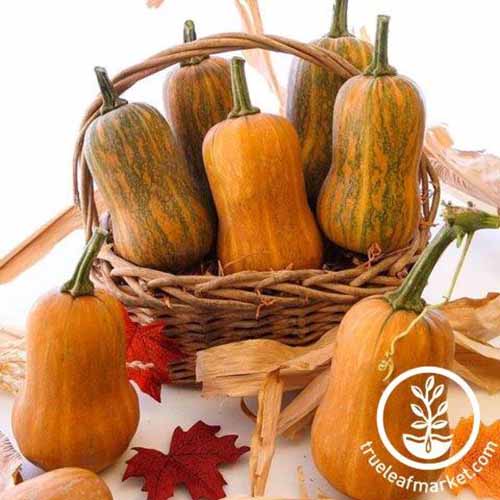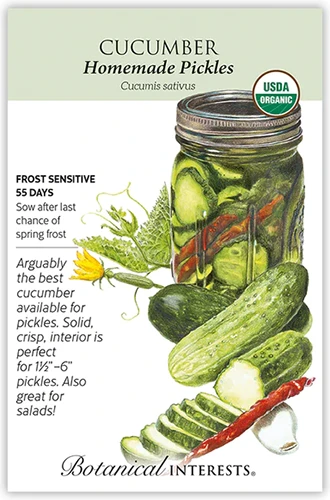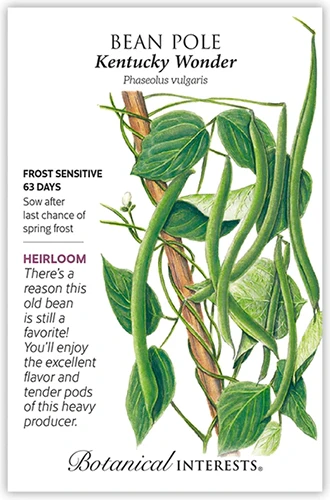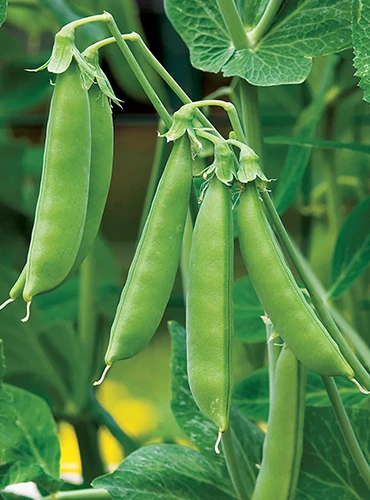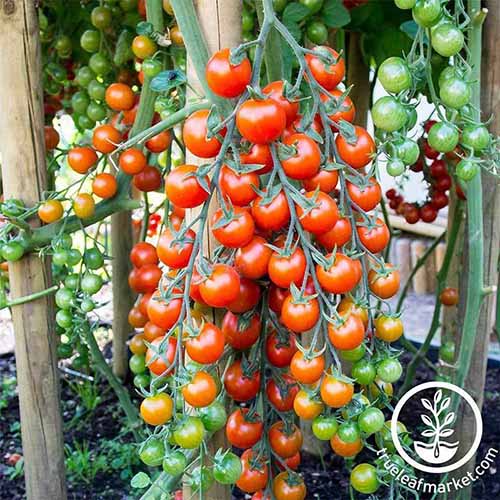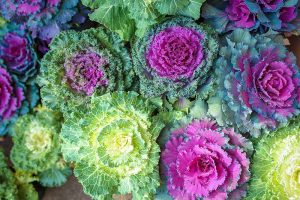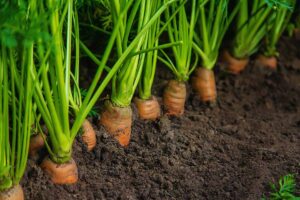With all the things a gardener can choose to grow, you might overlook vine crops. But they offer a wealth of advantages.
Growing tall vines like pole beans or cucumbers on a trellis may help you save space in a small garden, for example.
And vining crops can have substantial yields, like watermelons, pumpkins or tomatoes that produce pounds of fresh food from just a few plants.
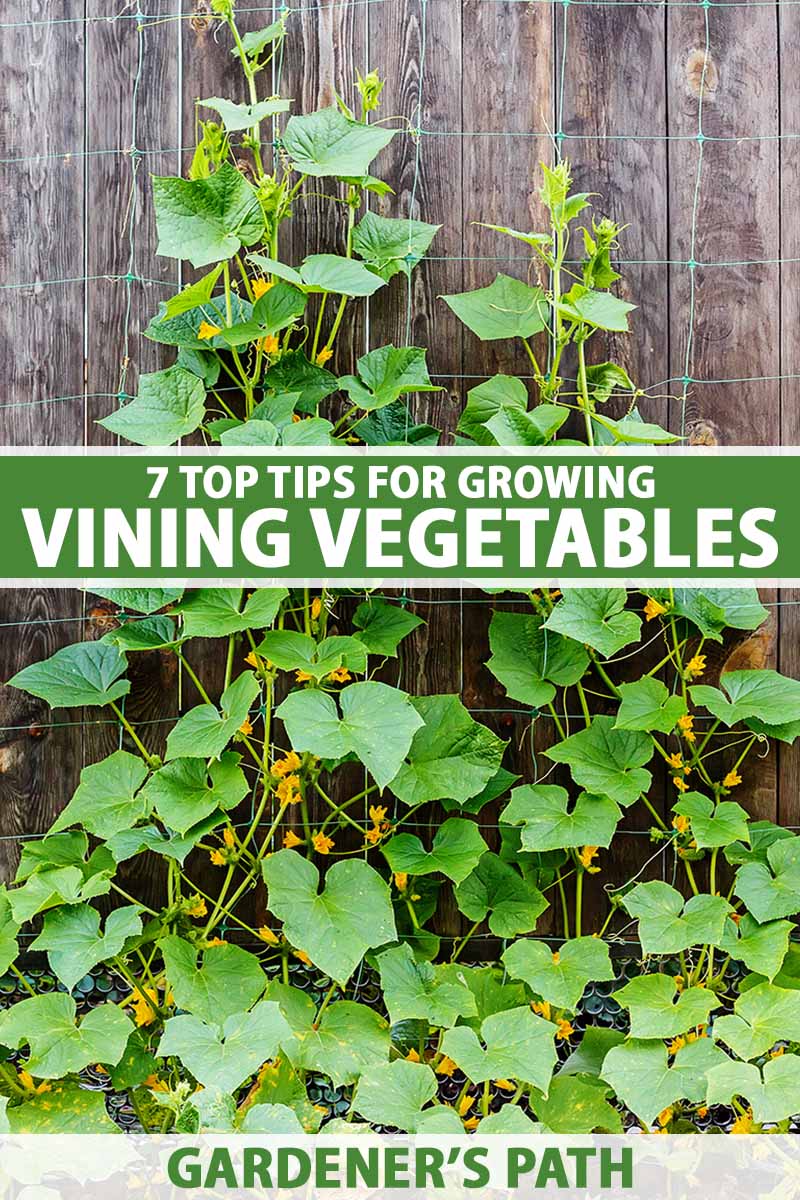
We link to vendors to help you find relevant products. If you buy from one of our links, we may earn a commission.
If you grow the vines aerially, you can often improve air circulation, which helps to deter fungal infections.
And being able to pick produce at hip or eye level makes harvesting so much simpler – and easy on the back!
Growing vine crops doesn’t have to be hard. Although these plants take some unique care, the payoff of wonderful fresh foods is well worth the effort.
Here’s how to get started:
7 Vining Vegetable Growing Tips
If you’re not used to growing veggies on vines, or it’s been a while, some considerations will make the experience easier and result in higher yields.
Here are seven top strategies:
1. Find the Best Varieties for Your Garden
Succeeding with vining vegetables starts with selecting appropriate varieties for your garden space and your area’s growing requirements.
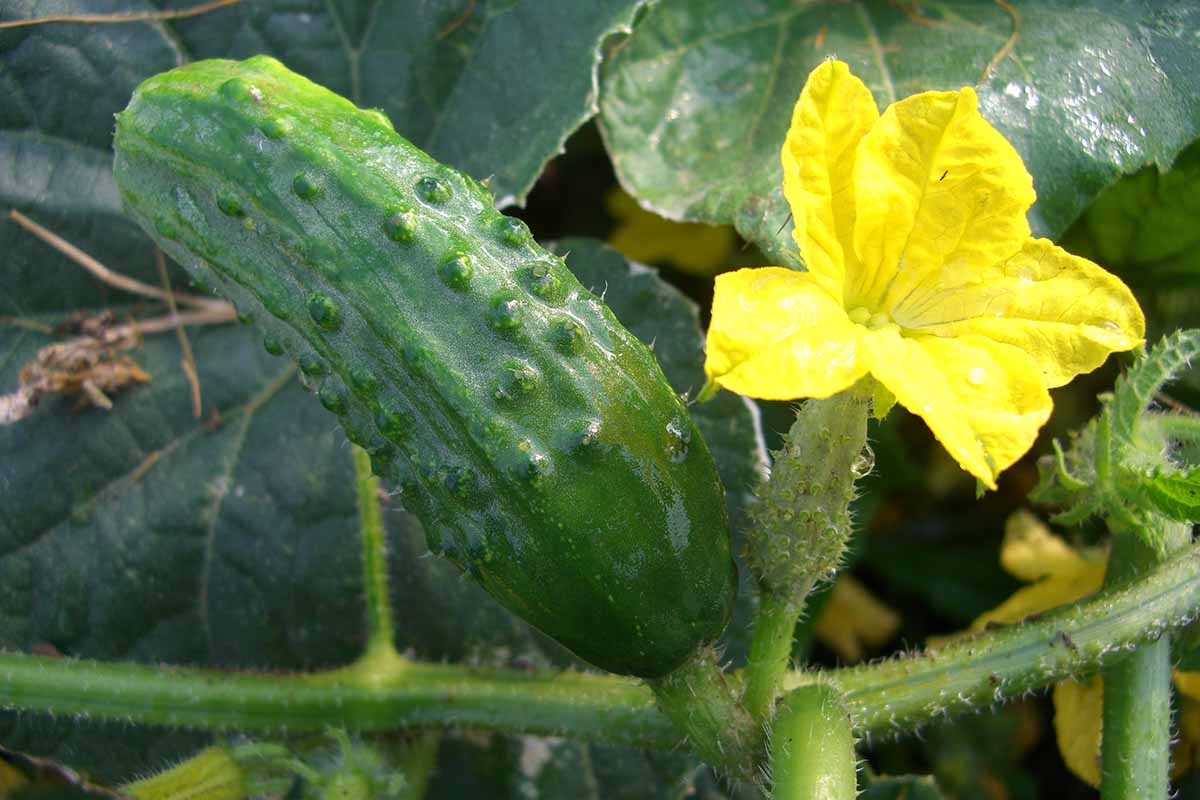
Some big producers, like field pumpkins or watermelons, can’t easily be staked or trellised due to their heavy fruits.
They typically require at least 10 square feet of garden patch per hill or plant to produce.
If you don’t have that capacity, it’s important to pick a more modest-size vining vegetable to grow – a mini watermelon, for example, or a short-vine butternut squash like ‘Honeynut.’
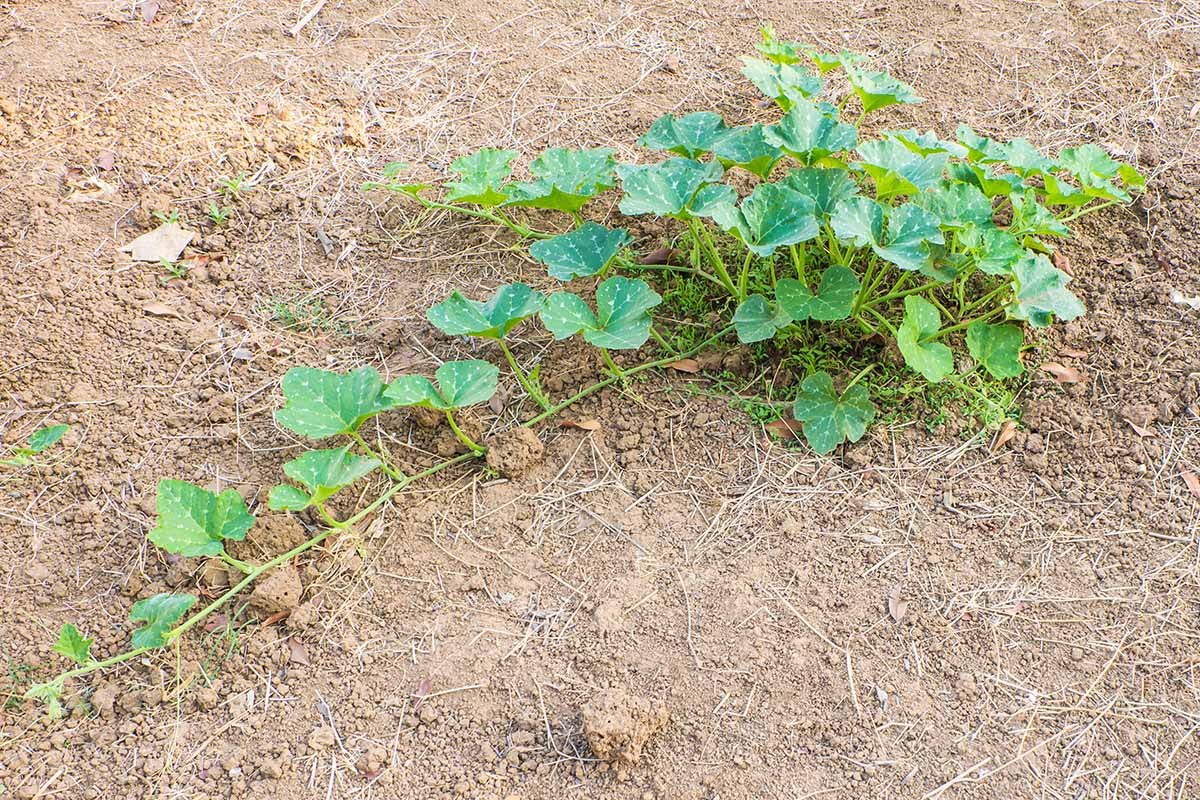
When planning to grow in containers, you’ll need to be even more aware of your limits.
Cucumbers, vining squash, or tomatoes will also need frequent watering during the growing season. Two or three times a week is not unusual, so be sure you can keep up the pace before choosing a container vine.
Vining vegetables are all heavy feeders, except for legumes like peas and pole beans. So they’ll require large containers filled with fertile soil, usually at least seven gallons for your typical tomato or cucumber.
Except for legumes, they’ll also need periodic fertilizing during the peak growing season, halting applications once the fruits appear.
One of the few drawbacks of vining vegetables is that many of them take longer to grow to maturity than bush varieties of the same vegetable.
‘Orient Wonder’ bean vines take 80 days to produce, for example, compared to bush bean varieties like ‘Harvester,’ which will yield starting 55 days from sowing.
Indeterminate vining types of cucumber may need several weeks longer to produce than hybrid bush types, and field pumpkins may not be ready for more than 100 days.
If you live where the growing season is shorter, or you’ve started planting your garden midway through the summer, you may want to opt for vegetables that will produce more quickly.
And one last consideration: the height. Some pole beans, like ‘Rattlesnake,’ can grow 10 feet or taller. Certain tomatoes can reach seven or eight feet tall, and cucumber vines may grow to be six to 10 feet tall.
Carefully examine seed packets and catalog descriptions to determine whether you can provide the support these fast-growing vines will need.
It’s no fun to reach the middle of the season only to realize the cages or stakes you’ve provided are woefully inadequate, or to watch strong, tall vines pull over the flimsy supports you thought would keep them upright.
Varieties to Try First
If this is your first go at growing trellised or vining vegetables, opt for a hardy, easy-care variety.
Here are five choices that all promise high yields – with the proper nutrition and support, that is:
Butternut Squash: ‘Honeynut’
Want the taste and long storage of homegrown butternut squash with a variety you can grow aerially?
‘Honeynut’ produces vines that are four to six feet tall with 12- to 16-ounce fruits starting about 110 days from sowing.
Find packets and bulk ‘Honeynut’ seeds available from True Leaf Market.
Learn more about butternut squash in our growing guide.
Cucumbers: ‘Homemade Pickles’
Interested in eating lots of fresh salads this summer, or maybe you’re an aspiring fermenter or pickler?
Either way, it’s hard to go wrong with space-saving ‘Homemade Pickle’ cucumber vines.
They require trellising, which keeps the harvest out of the dirt, but the vines grow just four to five feet tall so a tomato cage or a few bamboo stakes will work.
They’re also among the few vining vegetables that will thrive in containers, though three or four-foot stakes or cages are still needed for support.
‘Homemade Pickles’ Cucumber Seeds
The variety resists some of the most persistent cucumber ailments, including cucumber mosaic virus and powdery mildew.
Find ‘Homemade Pickles’ in 42-seed packets from Botanical Interests.
Check out our guide to growing cucumbers for cultivation details.
Pole Beans: ‘Kentucky Wonder’
‘Kentucky Wonder’ offers heirloom taste and is highly productive and disease-resistant. The pods can be harvested as fresh snap beans, shell beans, or to dry and store for winter.
The vines attain a height of five to seven feet, maturing in around 63 days and then producing for the rest of the summer.
Find ‘Kentucky Wonder’ seeds available in 40-seed packets at Botanical Interests.
Learn more about how to grow pole beans in our guide.
Snap Peas: ‘Sugar Snap’
One fun thing about vining snap peas is that you can sow them a few weeks ahead of your area’s average last frost date.
They won’t produce any more once the weather warms up, but you can clear the plants to make way for another vining crop starting in late spring.
‘Sugar Snap’ is an All-America Selections winner with six-foot vines at maturity.
It takes 70 days from sowing to yield, so if your springs are short, you may want to opt for a quicker-growing bush snap pea instead.
‘Sugar Snap’ is available in 300-seed packets from Burpee.
You can learn more about growing snap peas in our guide.
Tomatoes: ‘Supersweet 100’
This disease-resistant hybrid starts to bear clusters of extra-sweet red cherry tomatoes just 60 to 65 days from transplant, an advantage for impatient aerial gardeners.
Trellising the vines instead of letting them sprawl across the garden is an efficient use of space, since they grow to four feet or more.
It also lets you pick them without much bending over, a bonus when you consider that they produce 100s of fruits during a month-long harvest window.
‘Supersweet 100’ is available in 10-, 100-, and 1,000-seed packets from True Leaf Market.
Learn more about caring for ‘Supersweet 100’ in our guide.
2. Choose the Right Location
Like most vegetables, vines need full sun to grow quickly and produce heavily.
You’ll need a raised bed, garden plot, or container situated to receive at least six hours of sun each day.
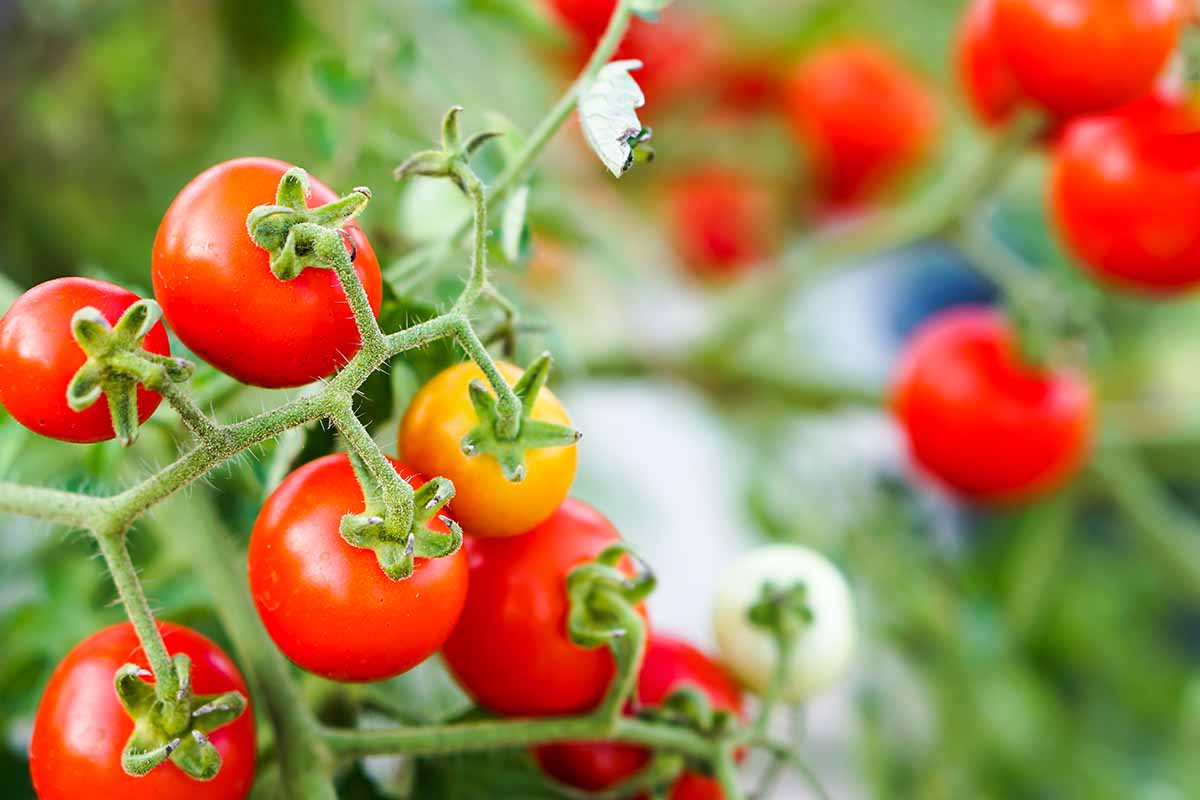
It’s also important to find a spot where you haven’t grown other vegetables in that family in the previous couple of seasons.
Savvy gardeners rotate bean plants, tomatoes and other nightshades, and cucurbits like cucumbers and pumpkins, to improve soil health and deter pests and diseases.
3. Prepare the Soil
Soil health is critical for vining vegetables. They’ll need well-draining soil with plenty of aged manure or other compost worked in to improve fertility and texture.
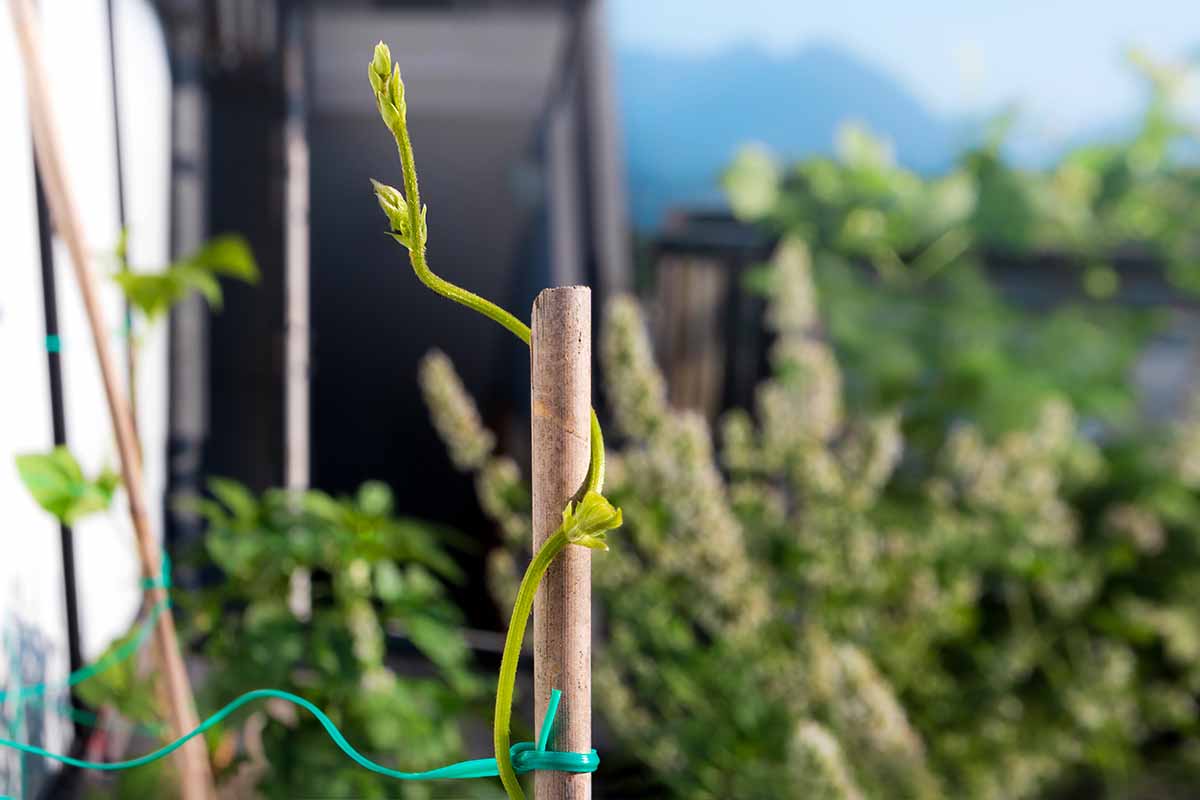
If you can, prepare the bed the season before you sow to allow the compost a chance to break down.
Till or break up the soil with a shovel down to a depth of at least eight inches, following the directions in our beginner vegetable gardening guide.
If you plan to plant watermelons, a sandy loam soil will be the best choice. But other vine-based vegetable plants can stand a heavier soil.
You’ll also want to consider your soil’s pH, ideally conducting a soil test the season before you plant. The ideal for most vining vegetables is around 6.5, but anywhere from 6.0 to 7.0 is suitable.
In fact, most vegetables will grow if the pH range is even broader, between 5.5 and 7.5. But if you want to maximize your yields, aim for 6.5.
With pole beans and vining peas, you don’t have to worry too much about pH or fertility as long as the soil is well-draining. They can grow in poor soil.
4. Select the Best Supports
Except for the heavy-fruited pumpkins and watermelons, you’ll usually want to grow vining vegetables vertically – that is, trained up trellises or other supports to save space and make it easy to weed, water, and harvest.
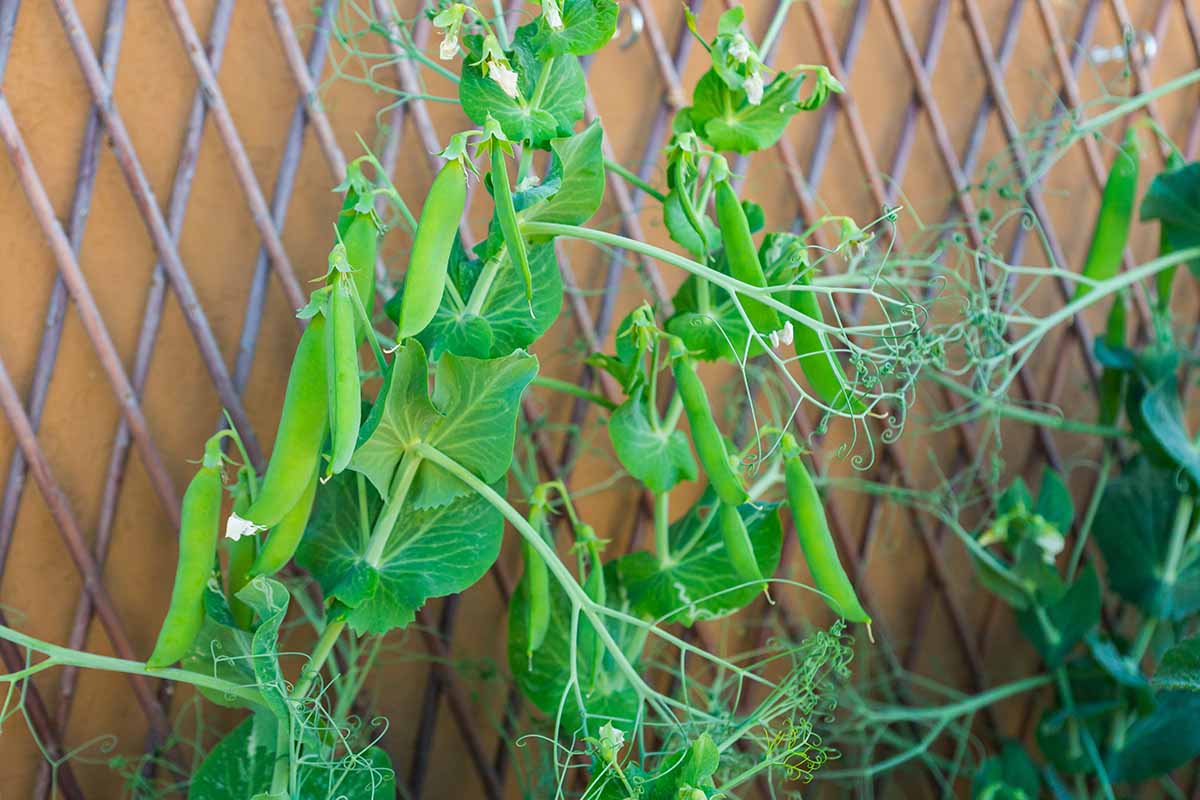
It’s important to use the right type of support. Pole beans, for example, will twine up ordinary wooden stakes or bamboo, but they’ll need to be quite tall – at least eight feet, or preferably 10.
Peas can grow on lighter pea netting attached to poles or teepees, but most beans and all types of cucumbers will need more substantial nylon netting, or wire or plastic fencing, attached to poles. They will simply tear down lighter supports or fall over.
Bush tomatoes are usually fine with the typical cages you can buy from the store, but vining indeterminate tomatoes may need more substantial – and taller – fence panels.
Learn more about supports for vining tomatoes or cucumbers in our guides.
5. Space Properly
When you grow sprawling vines, you’ll need plenty of square footage for them to trail over. Learn more about spacing pumpkins or watermelons in our guides.
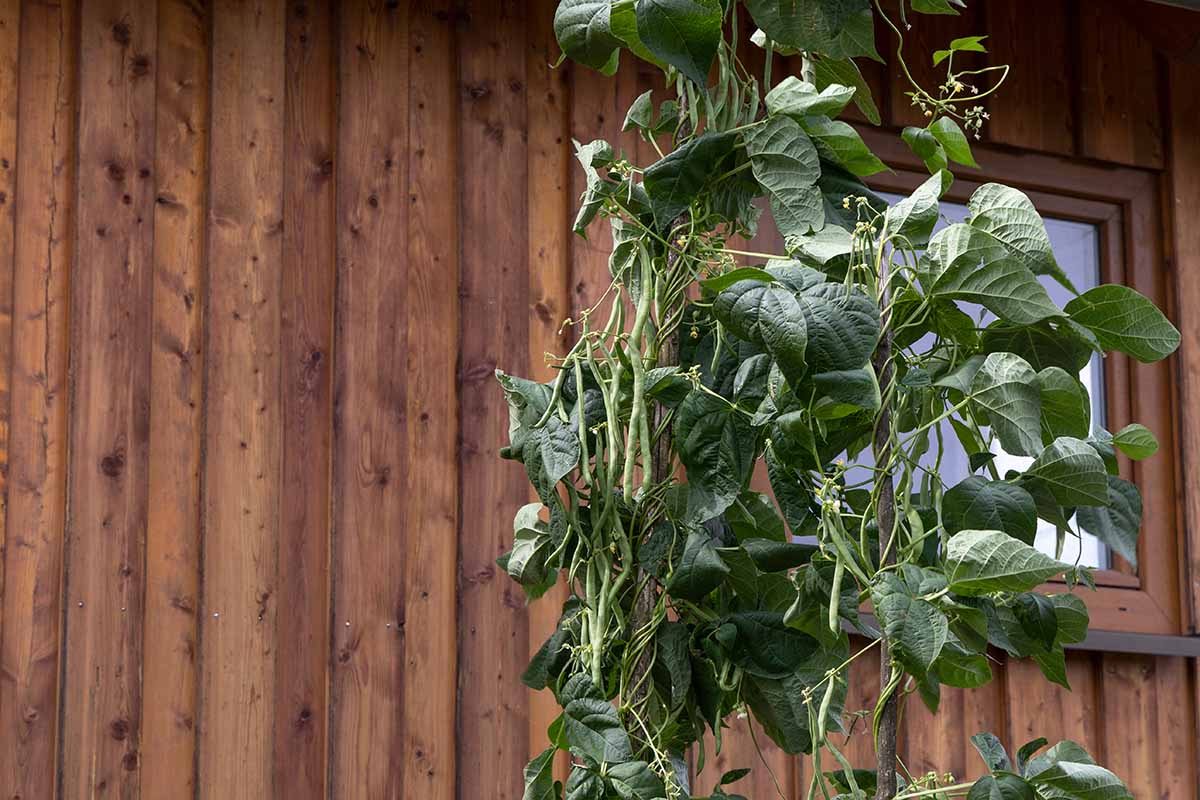
When you trellis, though, you can space the plants a bit closer together. Vining cucumbers, for example, can grow 12 to 18 inches apart, while peas and pole beans usually do best planted about three inches apart.
Vining tomatoes don’t need as much room to spread laterally as the bush varieties.
Be sure to read the seed packet or the label on purchased transplants for spacing recommendations to make sure they have enough space for ample air circulation.
It’s also possible to prune tomatoes so they aren’t as bushy and produce more.
6. Water and Mulch
Preparing the soil properly and planting vining vegetables where they’ll grow best is critical.
Equally important is the care that they receive while they are growing. In general, these plants thrive in hot weather.
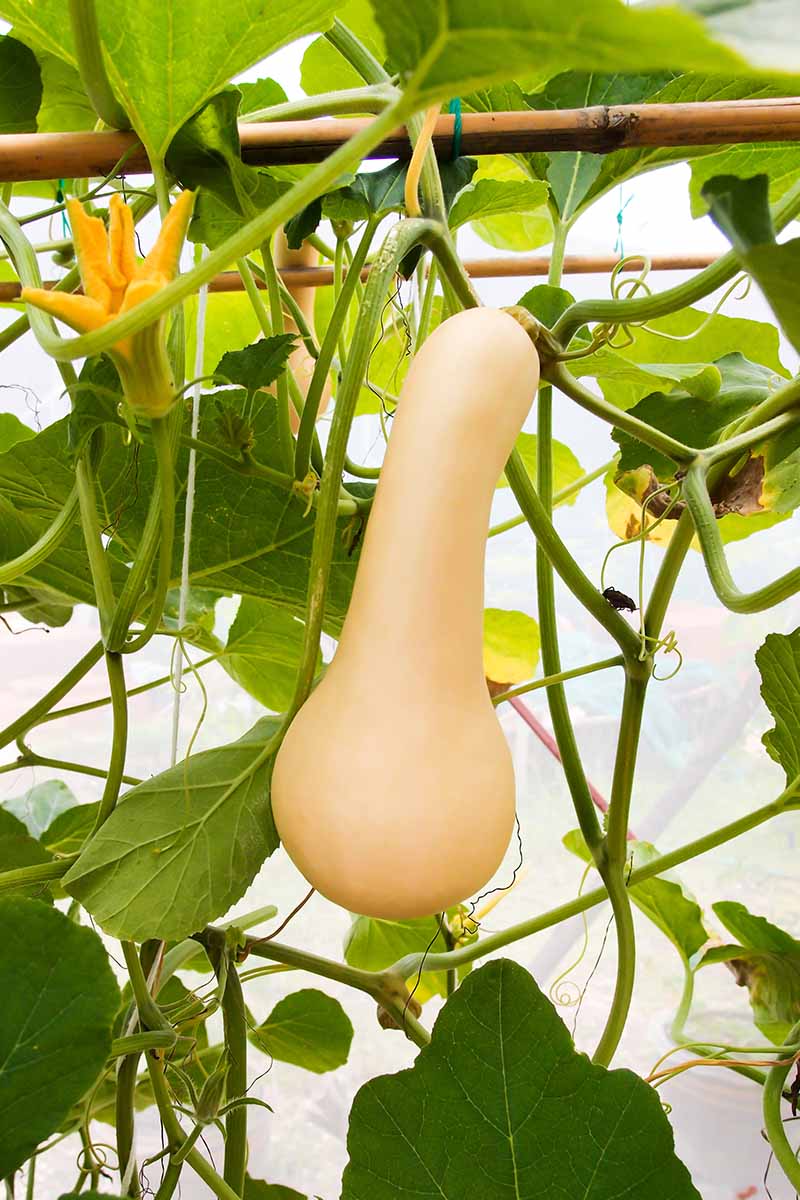
On average, they require a minimum of one inch of water from irrigation or rainfall each week of the growing season. It’s important to soak the soil thoroughly when you water them, and to aim for the soil surface so you don’t get the leaves wet.
When you water sandy soil, you will want to water more often.
In addition to watering carefully, you will need to keep up with weed control.
Start by applying a two-inch layer of untreated mulch, like grass clippings or pine straw, when the vines are a couple of inches tall. This will help suppress weeds and retain moisture.
Since the vines’ roots are so close to the top of the soil, whenever you cultivate to remove weeds, you must be very careful and keep your cultivation shallow to avoid tearing out the plants.
When this proves to be too difficult, remove large weeds by hand. And once the growing season is truly underway, skip the weeding altogether, or snip these garden invaders above the soil line.
Sure, a couple of aggressive weeds might compromise the health of a plant here or there, but that’s preferable to accidentally uprooting a bean, cucumber, or winter squash when you meant only to remove a weed growing close to the vegetable plant.
7. Pick at the Proper Time
You’ll usually wait longer for vining crops to produce than you would if you were growing bush varieties or leafy greens.
But once that wait is over, you may have your hands full (literally) keeping up with the harvest.
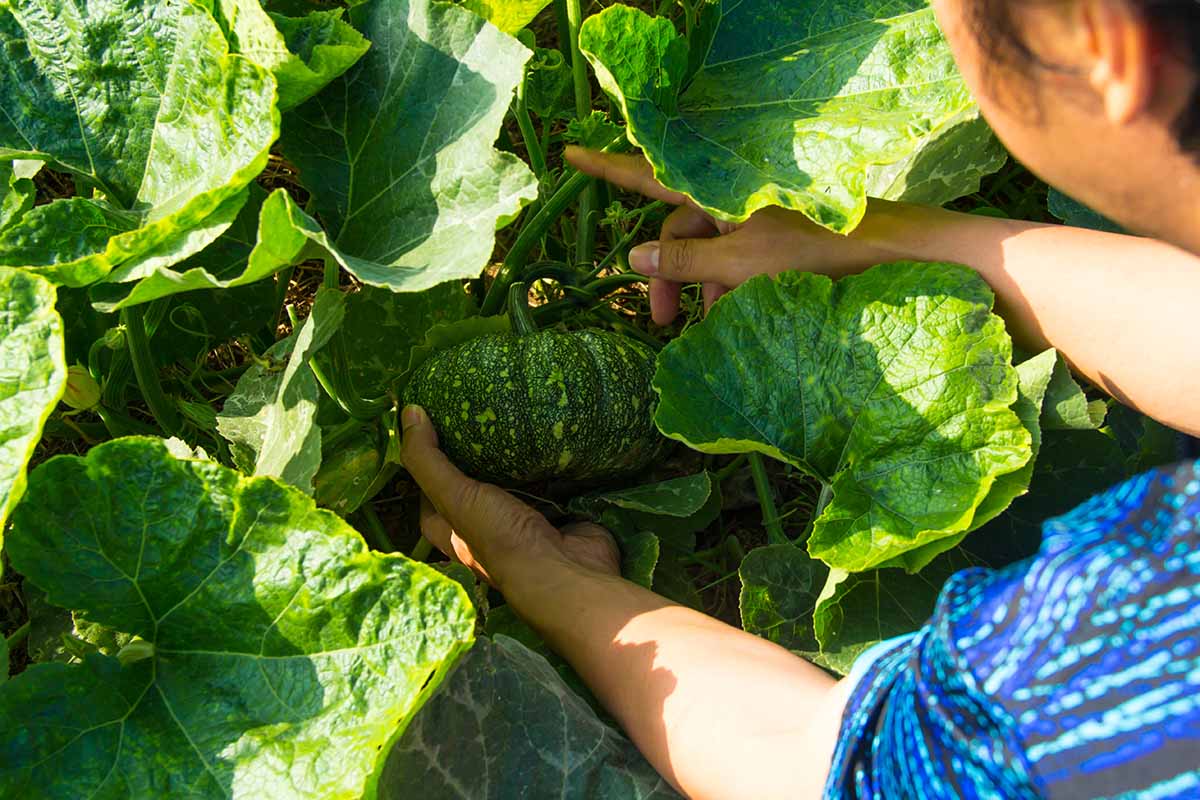
It’s important to pick vining vegetables at the proper time. Some pumpkins and other types of winter squash should stay on the vine to mature.
Read our guide to harvesting pumpkins for more information on that topic.
Cucumbers, beans, and peas should all be picked regularly to promote more blooms and fruit and also to keep the plants from turning their resources to seed production, instead of producing more fresh vegetables for your table and freezer.
Be sure to check the number of “days to maturity” on any variety you’re growing, and set a reminder on your phone or make a note in your gardening journal to start watching for the vegetables to appear.
Very Fine Vegetable Vines
If you live somewhere with a long growing season and you have–or are willing to obtain–plenty of well-draining, rich soil, you should give vine crops a try!

The care that you put into building the soil, setting up supports, banishing weeds, and maintaining their water supply can be very, very rewarding.
Bushels worth of produce, for starters, from baby pumpkins to green beans to heirloom tomatoes.
What types of vine plants are you growing in your garden this season? Let us know more about your experience and any questions in the comments below!
And whether you’re an experienced aerial gardener or a rookie, you’ll find more tips for growing produce in these vegetable guides next:
